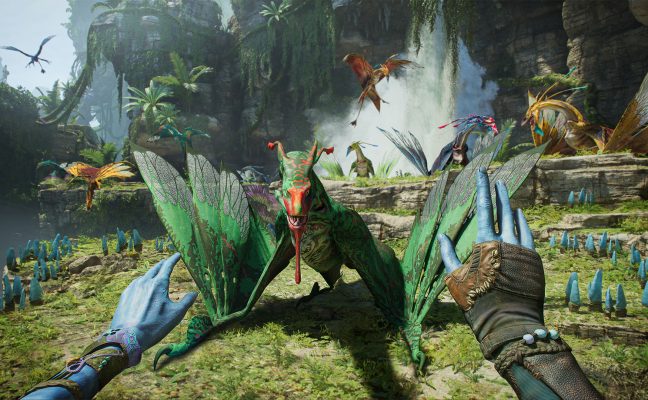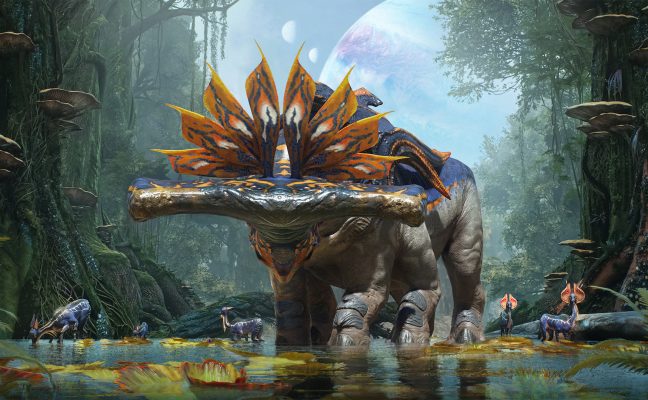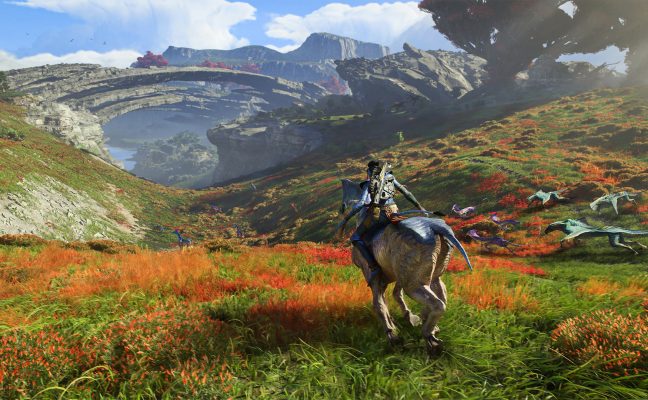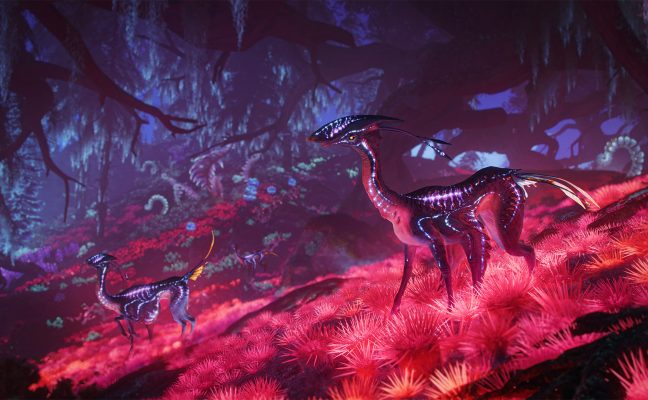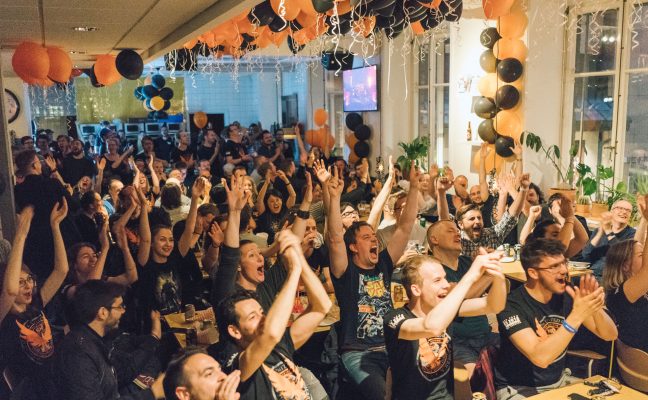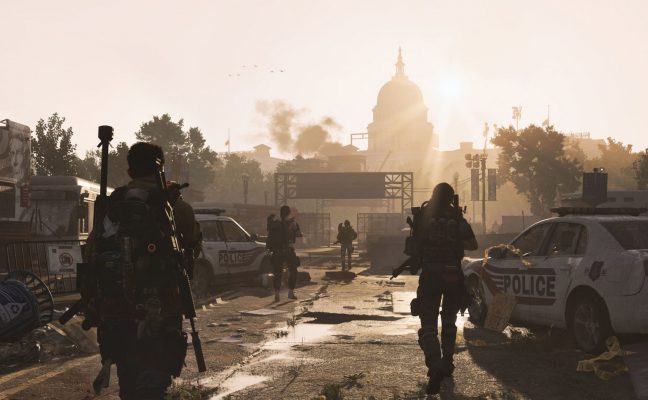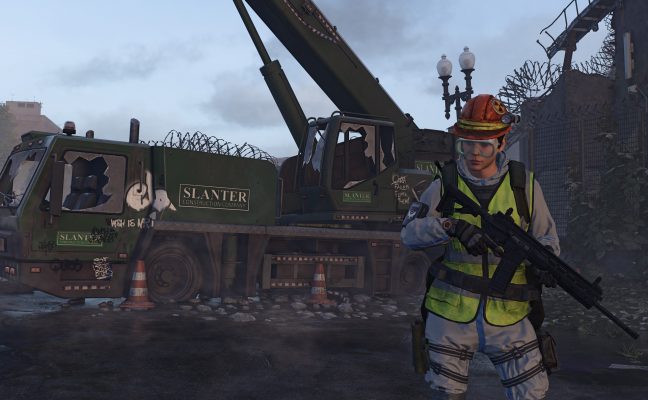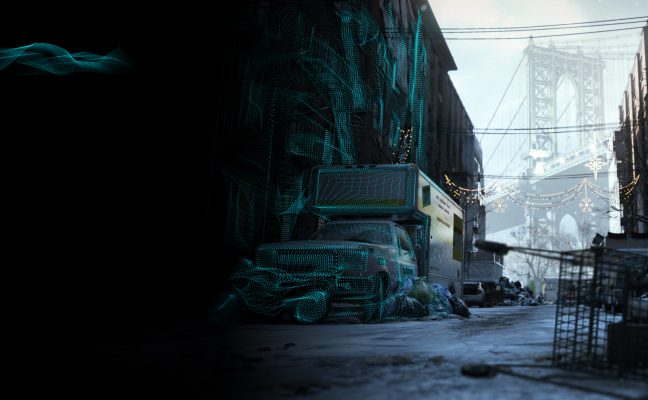What is worldbuilding? And why does it matter for game development? In this article, based on a talk at Malmö Game Week, Narrative Director Anne Reid shares her experiences in building imaginary worlds, how to make them feel alive, and why ethical worldbuilding is so important.

Much of what I do as a Narrative Director involves worldbuilding for video games.
Before I got into the games industry, I was a teacher of fiction, a narrative consultant on films, and writer of films and fiction. I’ve spent most of my professional life thinking about how we make stories, and how we create the worlds that those stories take place in, and I’m very grateful and happy to be doing that at Massive now.
But how can we build worlds in an ethical way?
What is worldbuilding?
Worldbuilding is the process of constructing an imaginary world, such as the galaxy where Star Wars takes place, or Middle Earth in Lord of the Rings. It can also mean constructing a specific set of rules for a world that is ours in some respects, but not in others, like the world of the Harry Potter universe, for example.
It’s something that novelists, filmmakers, cartoonists, board game designers, and others do before they begin to build a story that does not take place in a world that does not follow our rules of history, biology, and physics.

Worldbuilding usually involves creating the rules and structures of the imaginary world, so the imaginary world will feel consistent and rich with depth. It also helps support the themes the creators wish to engage with.
Worldbuilding involves things like imagining geography – how much water does your world have? How many continents or forests? What kinds of geological features?
Worldbuilding involves things like imagining geography – how much water does your world have? How many continents or forests?
It’s also about things like physics – does your world operate according to the known laws of physics, as a science fiction alien world might? Or does it operate according to rules that are made up, like a magical world where things float?
Worldbuilding also involves imagining things like sociology, biology, and anthropology. What kinds of people and animals live in your world? What kinds of other sentient life? Can rocks feel things in your world? Do the birds talk to you? Are there giants?
And if you have humans or otherwise sentient beings in your world, how are their societies organized? What are their governments like? Are there castes, taboos, laws, traditions, superstitions? What do your invented characters do every day, and most importantly, why do they do this?
As you can see, worldbuilding can potentially involve a lot of work, a lot of thought, and a lot of depth. This rich thinking can give us worlds that are so interesting and deep that consumers want to continue to experience them for themselves. If you’ve got a rich and varied world , people, our consumers – want to revisit it again and again and again.
This rich thinking can give us worlds that are so interesting and deep that consumers want to continue to experience them for themselves.

Why does world building matter for games?
In the world of game design, the goal of worldbuilding is to create a context for the game, or what we often call the “narrative wrapper”.
Even in games that are not story-heavy or driven by authored experiences in the same way novels and films are, the world in which a game takes place matters.
Worldbuilding gives you characters to care about, motivations for engaging with the world and its mechanics. It creates curiosity that drives you to explore, or to level up and see what will happen next, or what content is accessible to you as you progress. It provides goals and mysteries that propel you further into the game.
Worldbuilding also goes hand and hand with certain mechanics. Do you want your players to fly? Do you want them to be able to transform?
![]()
If you, for example, want to make a game in which players can battles with giant lizards while in the shells of giant robots, you must create a compelling world in which giant lizards and giant robots can logically exist, and in which they have good reasons to fight one another.
Unlike in films, novels, or television, the player is part of the story in games and part of the world that the creators have made. Solid, rich worldbuilding helps engage players with gameplay mechanics and allows immersion into the world game developers have created.
It gives them a chance to make their own story and find that experience entertaining and compelling. Mechanics provide compulsion loops, but narrative provides emotional connection, mystery, and discovery.
Why does being ethical matter?
Being ethical matters because people engage in imaginary worlds with the same passion and emotion that they do their own real lives.
People are motivated to do things within the imaginary world of games because of the narrative reasons we give them within the carefully constructed narrative worlds.
Being ethical matters because people engage in imaginary worlds with the same passion and emotion that they do their own real lives.
It matters because in games, the player is a participant with agency in the world we’ve created. And because the players are not merely watching something, but acting in the worlds we create, I believe we are obligated as moral beings and citizens of this tiny planet to make worlds that do not intentionally (or unintentionally) ignore realities of our own world, or reinforce problematic issues in our own real lives and the lived realities of our players.

So how, exactly, do we do this? How do we create worlds in an ethical way, according to ethical principles?
I believe there are some basic principles we can begin to follow. Some of these have to do with the world we are inventing, but much of it has to do with the way we populate that world.
Consistency
Players are entrusting you with their hearts, their minds, and their time. The narrative wrapper helps engage them to spend that time. If you have inconsistencies in your worldbuilding, you will break immersion. Inconsistencies will occur if the rules you have set for your world haven’t been thought through logically, or if your characters don’t behave according to the social rules you have laid out for your imaginary cultures.
If you have inconsistencies in your world building, you will break immersion.
Imagined worlds that are created for very large projects, or for projects that span several types of media, often have people who are gatekeepers for inconsistency in the lore. They also use what are called “story bibles”, documents used to keep track of the rules of the world you’ve created so that different creators can use them and maintain consistency.
Players might forgive one or two inconsistencies in a game if there are other elements they are enjoying, but there’s a limit to how many they can tolerate. If players are constantly slipping out of immersion because they keep stumbling across inconsistencies in how you’ve built the world in your game, they will begin to lose trust in your ability to handle their hearts, minds, and time, and they will put down the controller.
Create an authentic reflection of humanity – even in a world without humans.
All stories with sentient beings – be they robots, aliens, orcs, hobbits, fairies, or giant rampaging beasts – are creating reflections of human beings or human emotions. Every character in a fantasy world embodies some element of humanity – and that’s why we respond to them.
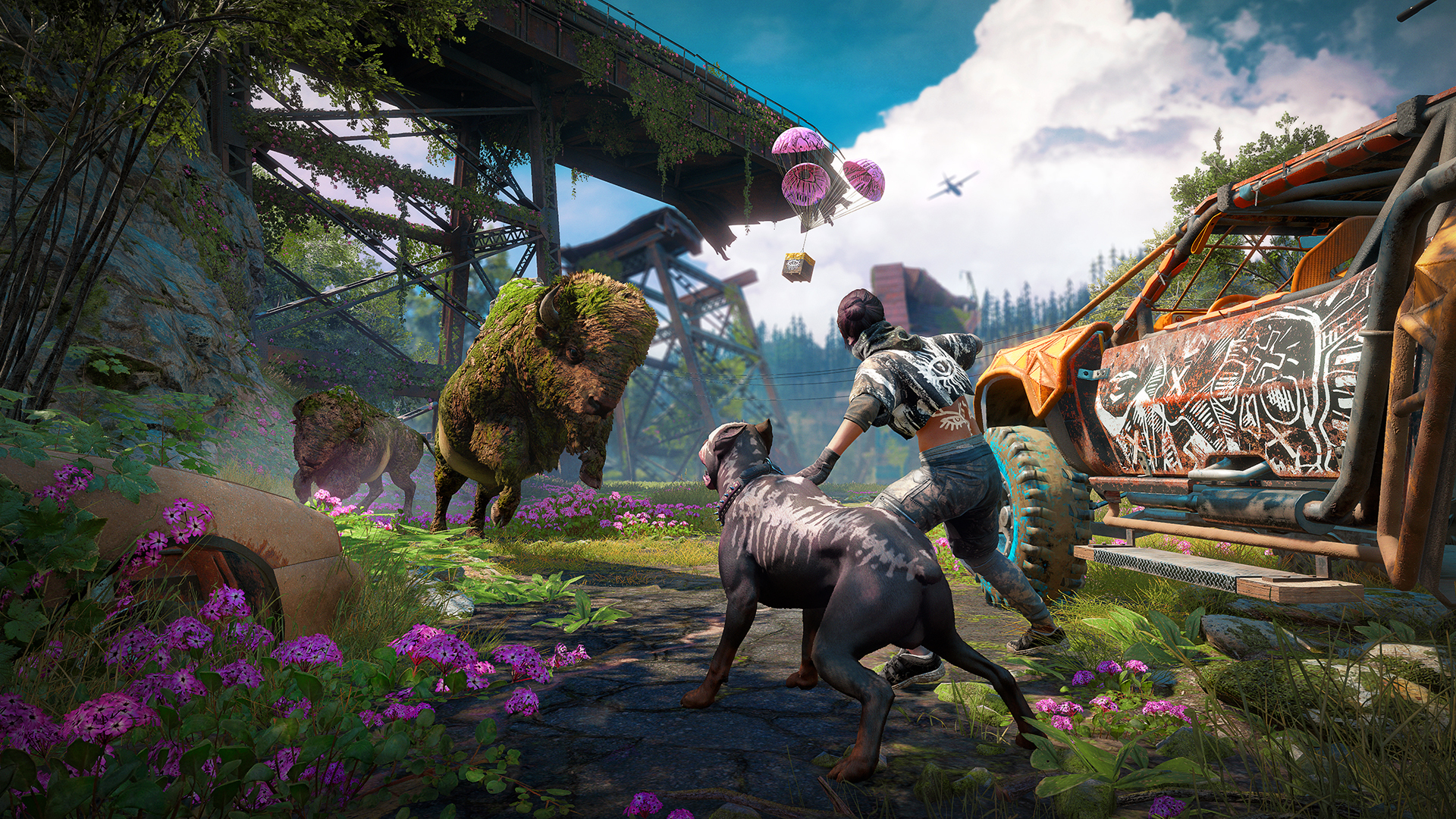
Even when we are making games about zombies or elves or fairies or robots or aliens, we are always making games that reflect aspects of humanity. No matter what distant star your game world is set in, it must reflect the depth and richness of human nature in order to resonate with players.
No matter what distant star your game world is set in, it must reflect the depth and richness of human nature in order to resonate with players.
We are compelled by the Vulcan alien Spock in the original Star Trek because he reflects a certain kind of stoicism that we recognize as a feature of people we know and love. We are compelled by the hobbits of Tolkien’s Lord of the Rings because they reflect a love of comfort and a joy at simple pleasures that we recognize as an exaggeration of a common quality we all share. We are drawn to the elves in that same universe because they are exaggerations of the beauty, mystery, and grace we see in humanity. We fear zombies because they reflect our fear of mobs, and of inexplicable, savage violence.
So, all imaginary beings are just extensions of our own humanity. But how do we go about creating authentic reflections of humanity within them?

First, we need to honor the same kinds of diversity that exists in our real world and aspire to the same kind of psychological and social depth in our imaginary worlds.
There’s a sociological term called, “symbolic annihilation”, and there’s a whole body of research around it. It means that if you consume a lot of media and don’t see any reflections of people like you, you begin to believe that people like you don’t matter. And other people, who don’t look like you, also absorb this and unconsciously come to believe that you matter less too.
Representation matters.
In the worlds we create, even the ones that take place in other galaxies or in other alternate magical worlds, should allow a broad spectrum of users to recognize people like themselves.
The real world isn’t composed of only one kind of people, so make sure your imaginary world isn’t either.
So, if you have a race of humans and a race of aliens, make sure that what you mean by “human” isn’t only white people. Or thin people. Or heterosexual people. Or people of only two genders. The real world isn’t composed of only one kind of people, so make sure your imaginary world isn’t either.
Related to the idea of diversity is the idea of checking your underlying unconscious bias
This is a big one.
When you’re creating the rules for your imaginary world, you may find that some of the decisions you have made about the alien races or the way your imaginary cultures are structured reflect real world biases. An example of this is that in much high fantasy, the good elves are pale and blonde, while “dark elves” are known for their deceit and cruelty.
Obviously, this has come out of associations and imagery long built into much of Western culture, so it’s not surprising, but it’s still very problematic.
Another unconscious association is connecting physical differences with villainy. It’s very common to see villains with limps, hunchbacks, or facial scars. This helps perpetuate real world fear and mistreatment of people with physical differences.
One way to catch this is to interrogate the choices you’ve made, but another way is a have a diverse, honest team who can help each other notice this kind of thing.
Closely related to this is the powerful tool of subverting those familiar and damaging tropes.

As I’ve said, when creating for example alien races or evil characters, creators have for many years relied upon certain signifiers as a kind of shorthand. Those signifiers emerged out of real-world stereotypes that carried over into fictional worlds and became tropes.
To counteract that, we can’t just avoid using old stereotypes in our world-building – we also need to subvert them to help change real-world associations. For example, make the orcs the heroes, and the light elves the villains.
We can’t just avoid using old stereotypes in our world-building – we also need to subvert them to help change real-world associations.
This kind of subversion of old tropes not only provides pleasure from surprise, it also trains users to not make judgments about people they meet in real life.
To try and catch these things, a good question to ask about the world you are building is this: does your world empower players? Or does it perhaps dis-empower some of them?
Ethical worldbuilding in practicality
For me, ethical worldbuilding means creating an authentic fictional world for our players to explore, learn from, and have fun in. But it also means creating guidelines for the creators to follow to ensure the world and the creators making it is working within a set of ethical guidelines.
Using gender-neutral language for the player
We use gender-neutral language for the player, rather than defaulting to “him” or “he”. We use this for project documentation as well as within the game.
No sexual violence as entertainment
My personal policy says that sexual violence can be a part of a character’s story, and in fact should be because we don’t want to erase that unfortunate reality from existence. But we will not show the actual act of sexual violence. We will not present sexual violence in an exploitative way, but we will not pretend it doesn’t exist either.
No gendered insults in speech
If we believe it’s not ethical to equate certain genders and sexualities with evil or to insinuate that there’s something inherently bad about being a woman, having parents who weren’t married, or having sex, then I don’t want to support that worldview by using language that supports that worldview.
Also, a good way to do ethical worldbuilding is to create a strong, supportive team.
As a leader of a large narrative team which crafts the playground that players can play in, I believe that finding the right team members is critical to building the kind of studio culture we want, which is critical to creating the worlds we want.

Everyone is a worldbuilder
Even if you do not do worldbuilding professionally, even if you have never made a game or written a story, you are still a worldbuilder.
We all live within a narrative wrapper we have created for ourselves. It’s part of the human experience to take the raw material of our lives and turn it into a coherent narrative, a story with twists and turns, love and sorrow, conflict and resolution. That story, which we tell ourselves, begins with our birth and ends with where we are today.
It’s part of what we tell people when we meet them, though parts of the story come out to different people and at different times. We tell our story in bars, in board rooms, over fika.
Stories allow us to interpret the things that have happened to us, and that’s incredibly powerful.
But it can also be limiting.
We can fall into fulfilling the story we are telling ourselves.
We tell ourselves that we have good intentions, so we stop interrogating ourselves. We tell ourselves that it’s too complicated, so we go for something easy and reductive.
Sometimes the stories we tell ourselves limit us from building a new story or seeing the old one in a new way. Sometimes the world building we’ve done on our own lives diminishes us rather than enriches us.
I try to let go of my story when I see it’s putting me in a cage, rather than freeing me.
Letting go means stepping away from the world we have built for ourselves and see what else is out there. See what is happening in the here and now, away from our own story.
That’s when we can create new worlds – not only for players, but also for ourselves.


